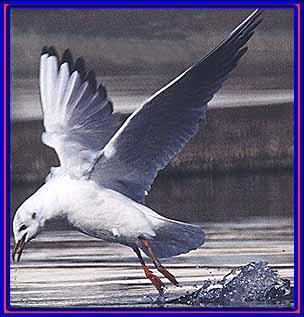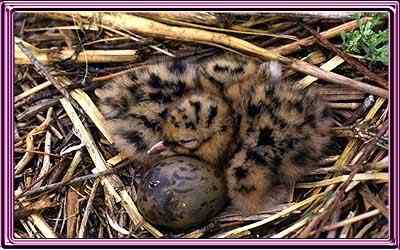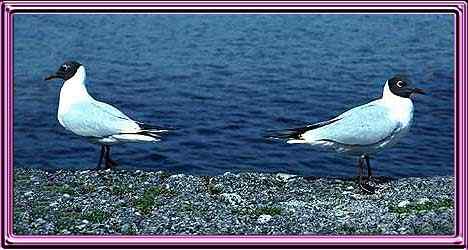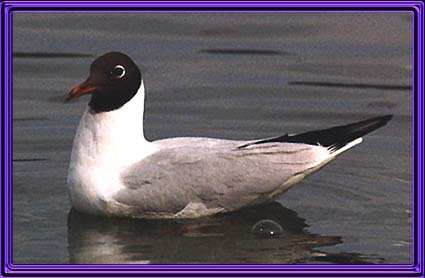
Larus ridibundus
(Black Headed Gull)
(Black Headed Gull)
This is the smallest of the common gulls and is easily distinguished, when, in spring and summer it has a dark brown, nearly black, head. At other times it can quite easily be confused with the Common Gull (Larus canus), as it is the most commonest of our gulls on inland waters. This because the winter plumage of the Black Headed Gull is without the black head, having only a dark mark behind the eye (see below). At all other times it may be recognised by the deep red bill and legs and the white band along the front edge of the wing. These birds are extremely sociable and can be seen in large numbers inland together with Rooks, Lapwings and Golden Plovers. Whilst on the coast with other gulls and also wading birds.
The plumage is generally white with a grey mantle, and the black wing tips are without the usual "mirrors". Young birds are mottled with brown on the wings, (see below).
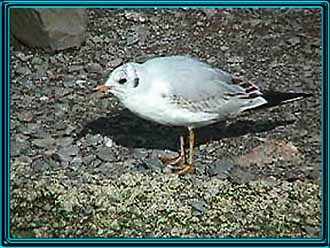
Biology:
Size: The length of this gull is 15 inches.
Habitat: The coast and inland waters.
Nest: The nest is usually built on the ground, but it may sometimes be on a wall or a rocky ledge. It usually consists of sticks and grass, reeds and sedges and similar material in the vicinity, lining a depression in the ground if this is dry, but where the surroundings are very damp it may become a very large structure.
Eggs: There is only one clutch of eggs in the year, and it is laid towards the end of April or sometime during May. It contains two or three eggs, though in rare cases four have been recorded. There is considerable variation both in colour and in the marking of the eggs. The ground colour ranges from a creamy buff through bluish and greenish shades to olive and brownish, and the markings are grey with different shades of brown to near black. These markings consist of spots and blotches, which are often scattered more or less evenly over the shell, although sometimes they may be clustered together in a zone.
"Aren't they cute...!"
Food: Feeds on scraps and carrion, including waste fish scraps. On land it follows the plough and eats harmful insects and grubs.
"But I only went out for a pint darling"
